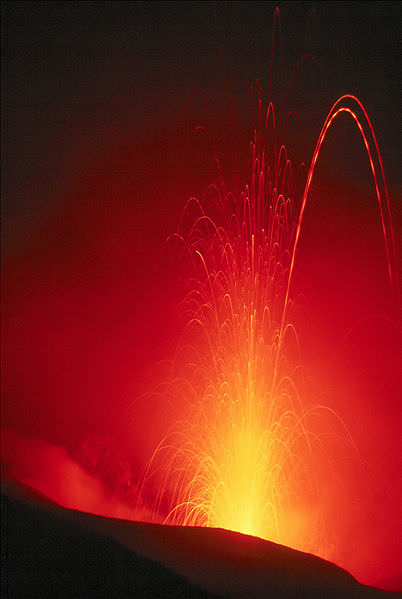[/caption]
Here on the surface of the Earth, the ground is cool and comfortable. But as you descend into the Earth, temperatures increase. By the time you get to the Earth’s mantle, temperatures can get more than 1000 degrees C. The high temperatures cause rocks to melt into magma. This magma collects together into large underground pools called magma chambers.
The molten rock in a magma chamber is under tremendous pressure. This pressure fractures the rock, and the magma seeps through these cracks, rising to the surface. When the magma finally reaches the surface, you get a volcanic eruption. What started out as magma inside the Earth becomes lava, ash, gas and volcanic rock.
Magma chambers are hard to detect. That’s because they can be deep underground. The magma chambers that scientists actually know about are only 1 to 10 km under the surface. Scientists can identify the location of magma chambers through seismology. They detect the minor earthquakes that happen as magma moves up through through the rock into and out of a magma chamber.
Once a volcano erupts, it empties out the magma chamber, causing the surrounding rock to collapse inward. If enough rock collapses, you can get a large depression at the surface of the Earth called a caldera.
In 2006, drillers in Hawaii accidently pierced into an active magma chamber. It was the first time that magma had ever been studied “in its natural habitat.” They were searching for geothermal energy sources at a depth of 2.5 km when their drill bit went into the magma chamber. Molten rock went back up the bore hole several meters and then solidified so the scientists could study it.
We have written many articles about volcanoes for Universe Today. Here’s an article about the difference between magma and lava. And here’s an article about different types of volcanoes.
Want more resources on the Earth? Here’s a link to NASA’s Human Spaceflight page, and here’s NASA’s Visible Earth.
We have also recorded an episode of Astronomy Cast about Earth, as part of our tour through the Solar System – Episode 51: Earth.

